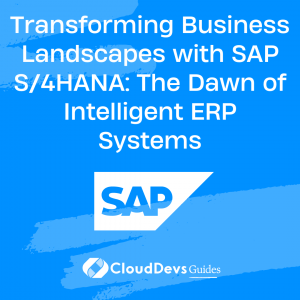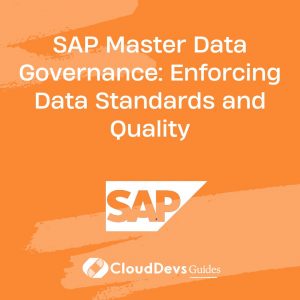Transforming Business Landscapes with SAP S/4HANA: The Dawn of Intelligent ERP Systems
In the face of a rapidly evolving digital landscape, businesses must adopt advanced technological solutions to maintain their competitiveness and efficiency. One such powerful tool in the arsenal of digital transformation is SAP S/4HANA, an intelligent, next-generation Enterprise Resource Planning (ERP) system. But comprehending what SAP S/4HANA is and how it’s revolutionizing business operations can be a daunting task. This blog post aims to demystify SAP S/4HANA, highlighting its core components, capabilities, and real-life examples. As businesses strive to leverage the full potential of this system, the demand to hire SAP developers who can adeptly navigate and optimize this robust platform is on the rise. With their expertise, businesses can unlock the full potential of SAP S/4HANA, capitalizing on its intelligent features to drive operational excellence and strategic growth.
What is SAP S/4HANA?
At its most fundamental level, SAP S/4HANA (System Applications and Products, Business Suite for HANA) is a future-ready ERP system built on the HANA in-memory database. Introduced by SAP SE, it offers a suite of business applications that seamlessly integrate and manage a company’s finance, supply chain, customer relations, and other core processes in real time.
The ‘S’ stands for ‘Simple’, signifying the software’s streamlined data model, while ‘4’ denotes the fourth version of SAP’s Business Suite. ‘HANA’ represents High-Performance Analytic Appliance, a powerful in-memory database that allows quick processing of massive volumes of real-time data.
SAP S/4HANA utilizes AI and Machine Learning to automate routine tasks, provide predictive analytics, and enable interactive business planning. It’s designed to break down data silos, ensuring a unified view of business operations and real-time insights for informed decision-making.
The Core Components of SAP S/4HANA
SAP S/4HANA offers a wide range of modules catering to diverse business functions. Here are some of the core components:
- SAP S/4HANA Finance: This module simplifies and automates financial operations, provides real-time insights, and enables predictive analytics for financial planning.
- SAP S/4HANA Sales: It streamlines sales processes, integrates sales with other operations, and provides detailed insights to optimize sales performance.
- SAP S/4HANA Supply Chain: This module offers end-to-end visibility, planning, and execution of supply chain processes, ensuring optimal inventory management and reduced costs.
- SAP S/4HANA Manufacturing: It allows efficient management of production processes, quality checks, and maintenance schedules, contributing to higher productivity and quality.
- SAP S/4HANA Human Resources (SuccessFactors): This HR module ensures efficient talent management, payroll, and timekeeping.
- SAP S/4HANA Sourcing and Procurement: It enables better vendor management, contract negotiation, and cost-saving through strategic sourcing and procurement.
SAP S/4HANA in Action: Real-life Examples
Now that we understand the capabilities of SAP S/4HANA, let’s delve into some examples of how it has transformed various industries.
Retail Industry: Improved Inventory Management
A prominent retail chain was struggling with slow, disjointed processes and a lack of real-time visibility into its inventory. Implementing SAP S/4HANA allowed the retailer to gain immediate insights into stock levels across multiple locations, reducing overstocks and understocks. It enabled real-time demand forecasting, contributing to improved planning and inventory turnover. Additionally, the automation of mundane tasks resulted in enhanced employee productivity and better customer service.
Manufacturing Industry: Optimized Production
A global manufacturing firm was facing operational inefficiencies due to outdated systems and fragmented data sources. Implementing SAP S/4HANA facilitated end-to-end visibility into production processes and automated repetitive tasks. The AI capabilities allowed for predictive maintenance, reducing downtime and improving overall efficiency. Furthermore, real-time analytics helped optimize resources, streamline supply chain operations, and reduce costs.
Financial Services: Enhanced Financial Reporting
A large financial institution was struggling with slow, manual financial reporting and reconciliation. The introduction of SAP S/4HANA Finance transformed these processes. It offered real-time, accurate reporting and automated reconciliation, enabling quicker decision-making. The predictive analytics feature further allowed for proactive financial planning and risk management.
The Future with SAP S/4HANA
The adoption of SAP S/4HANA marks a significant shift towards digital transformation, redefining the way businesses operate and compete. Its potential lies not just in streamlining and automating processes, but also in transforming business models and driving innovation.
In the future, as more companies adopt SAP S/4HANA, we can expect greater advancements in business intelligence, predictive analytics, and AI capabilities. This will further propel businesses towards a fully integrated, intelligent enterprise model, providing them with a competitive edge in an increasingly digitized world.
The future of ERP is here with SAP S/4HANA. It’s more than just a software update; it’s a step towards creating intelligent enterprises that can adapt, innovate, and grow in the face of changing business landscapes. By breaking down silos, offering real-time insights, and enabling predictive capabilities, SAP S/4HANA is undoubtedly setting the standard for the next generation of ERP systems.
Conclusion
In the rapidly changing digital landscape, businesses require agile, intelligent solutions like SAP S/4HANA. This powerful ERP system streamlines operations, providing real-time insights and helping businesses transform into intelligent enterprises. Its transformative impact across various industries, from retail to manufacturing and financial services, is evident. The next step in this ERP revolution is to hire SAP developers to further unlock business intelligence, predictive analytics, and AI capabilities. As a strategic enabler, SAP S/4HANA extends beyond traditional ERP functionalities, leveraging data-driven insights and automation for business success.
Table of Contents









